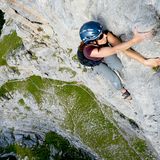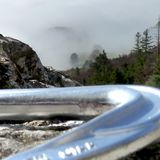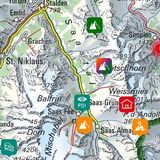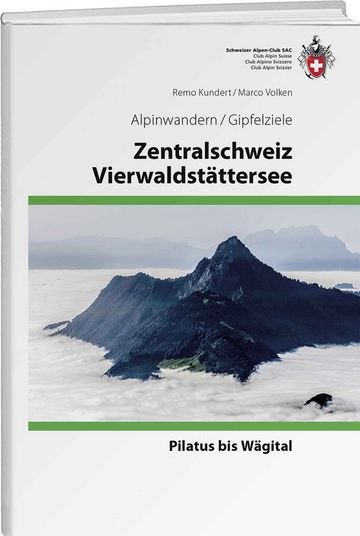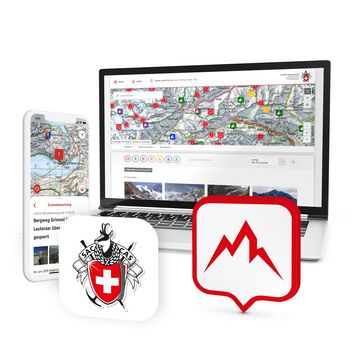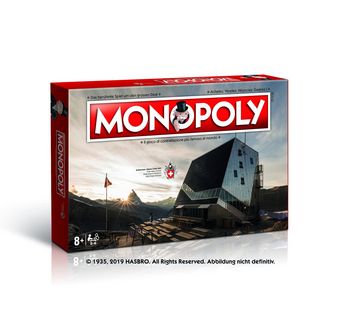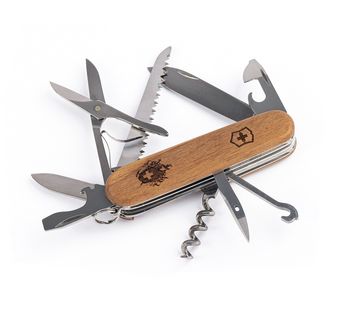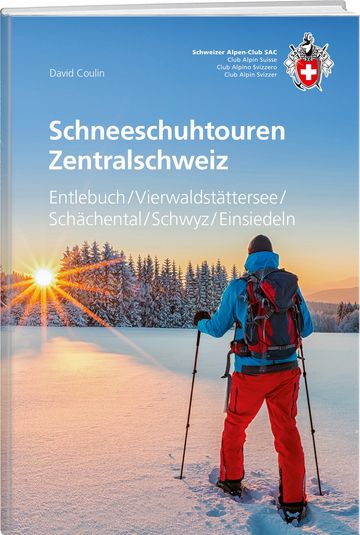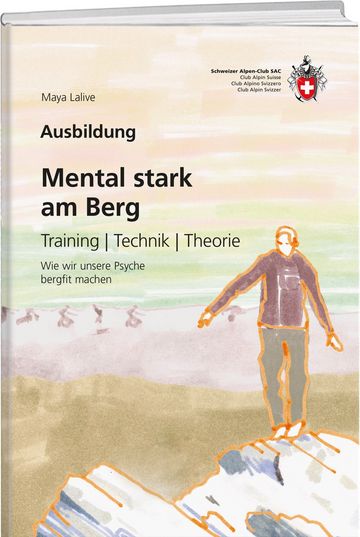-
- Difficulty
- 6a (5c)
-
- Pitches / Height Difference
- 11 P / 6 h, 360 m
-
- Exposition / Rock Type
- S / Granite
-
- Altitude start
- 2850 m
First climbed in 1964 by Max Niedermann, this route quickly became a benchmark in alpine climbing. Many alpinists, even today, come to measure themselves against it. If you are able to distinguish the line and its main features etc. from the glacier, the route finding itself will be more straightforward. The deep rounded cracks make placing natural pro a challenge, and offer a good workout for the arms. Manage your reserves - there are still some surprises near the top of the wall! The abseil descent is tricky and not always in the fall line - study the topo well so you don't get into trouble.

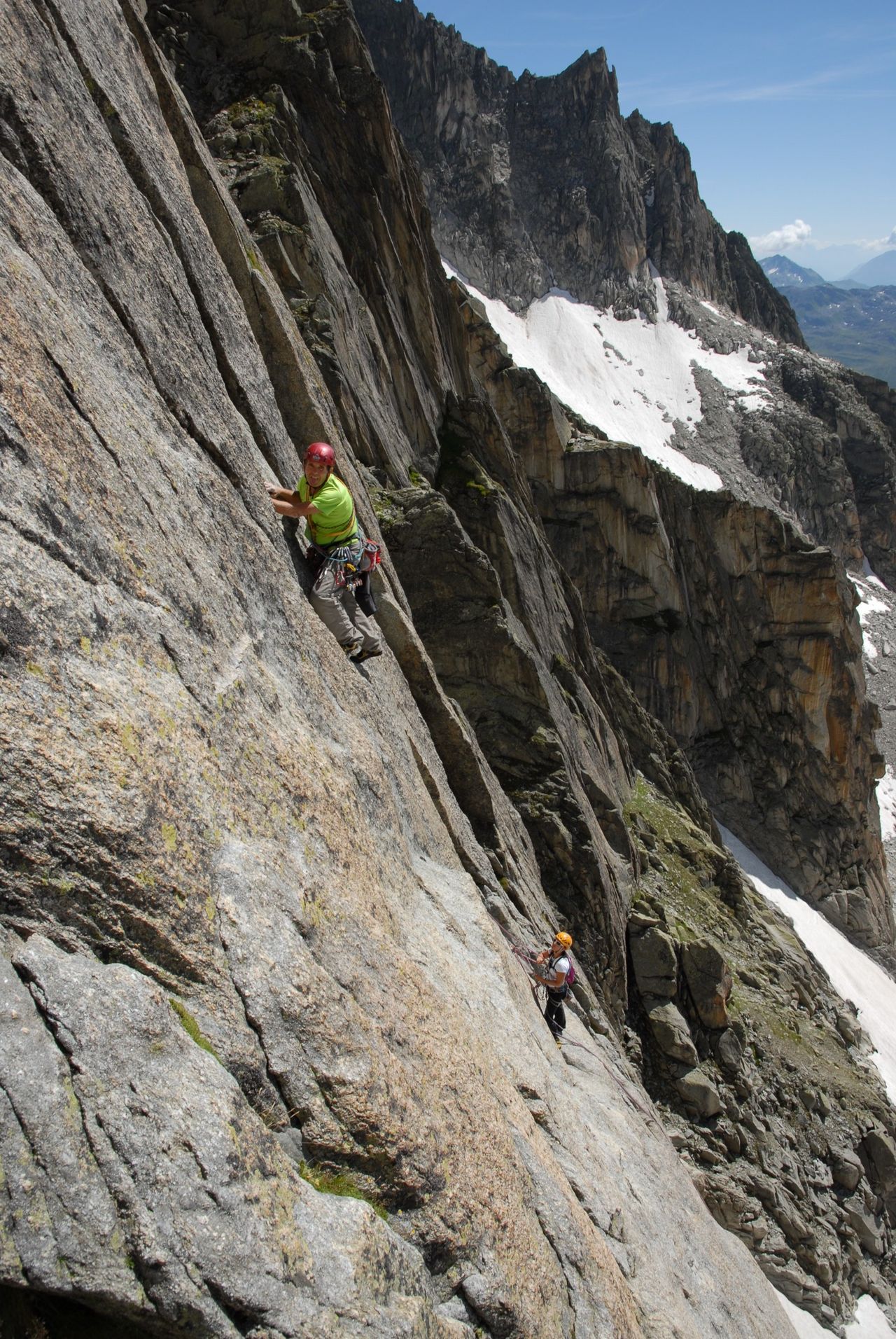



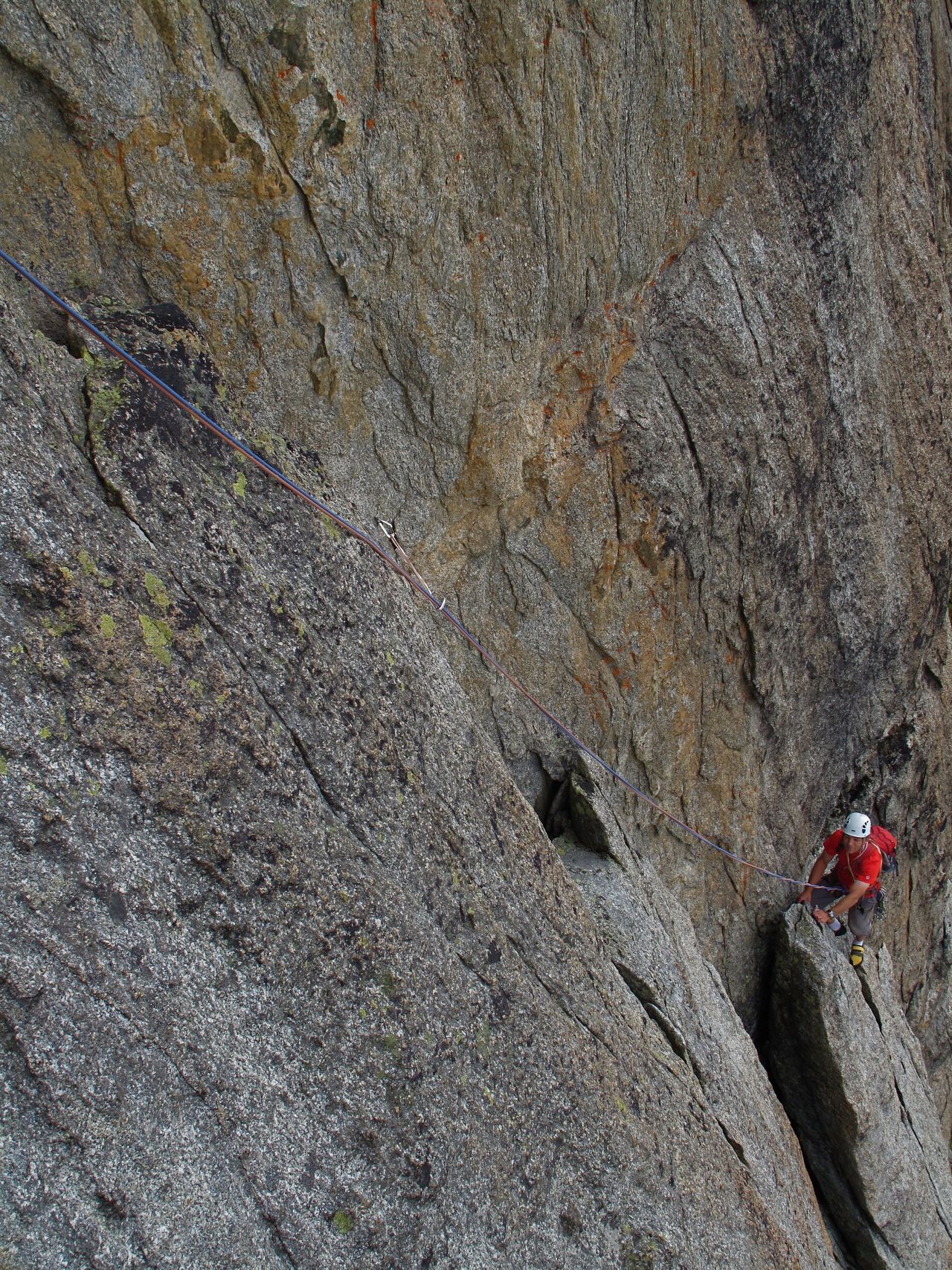

Route description
Additional information
-
Protection
-
Mediocre equipped, longer runouts possible
-
Rope
-
2x50m
-
Quick draws
-
12
-
Stoppers
-
✔
-
Friends
-
✔
-
Trad Protection: + sparse placements, placing gear is difficult ++ good placements, placing in most cases possible +++ very good placements, placing gear is easy
-
+
-
Abseiling possible
-
✔
-
Foot Descent
-
-
-
Ski approach possible
-
✔
-
Glacier equipment
-
-
- Time
-
The climbing is athletic, good stamina is essential to not slow to a crawl.
- Difficulty
-
Pitchs 1, 3, 9 & 10 are 'tough as old boots'.
- Rock Type / Quality
-
Deep and rounded cracks make for good wrestling.
- Protection / Material
-
Friend 0.5 - 3, and a set of nuts are all but essential.
- Descent
-
Study the topo and stick to it, so as to not stray of course. The abseil piste runs separate to the route.
- History
-
Max Niedermann, Werner Sieber, 1964 / 1991

